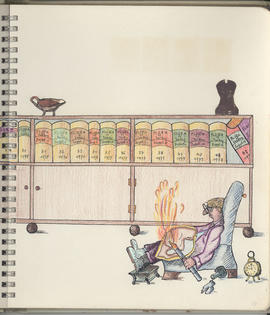- DPH
- Person
- 1918-1982
Born Somerset 1918; died Edinburgh 1992
Peter Davis’s interest in botany began in 1937 with a training post at Ingwersen's Alpine Plant Nursery in East Grinstead. In 1938 he set off on his first botanical expedition, as an amateur and on his own initiative; early correspondence with Sir William Wright Smith at the Royal Botanic Garden Edinburgh had dissuaded him from a more ambitious trip to the Andes. He visited Greece, the Middle East and Turkey, starting herbarium collections, but had to break off his trip in 1939 with the commencement of World War II. He was called up into the army and served until 1945, spending part of his time in Cairo. Immediately after he was demobbed, Davis moved to Scotland to study botany at the University of Edinburgh, taking a B.Sc. followed by a PhD. Awarded in 1952 and later a DSc. (1964). His PhD. Thesis on the taxonomy of Middle East Flora was the foundation for the project which was to become his life’s work on the Flora of Turkey and the East Aegean Islands. The first volume was published in 1965, the tenth and last in 1988. During the 1950s and 1960s Davis made many overseas trips, collecting plants in Kurdistan, Russia, Turkey and the Middle East, eventually accumulating 50,000 herbarium gatherings. In the 1970s he became reader then professor in Taxonomic Botany at Edinburgh University and was an honorary associate of the Royal Botanic Garden Edinburgh, providing the last formal link between the university and Garden, where his Turkish herbarium collections now reside. He received many awards over his lifetime including the Cuthbert Peek Award of Royal Geographical Society, the Gold Medal of the Linnaean Society of London, the Neill Medal of the Royal Society of Edinburgh, and was honoured by the Turkish government for his outstanding achievements in science. His other interests included modern art – his collection was exhibited at the Scottish National Gallery of Modern Art in 1964 - and Wemyss pottery. Under the terms of his will he endowed the Davis Expedition Fund, to assist Edinburgh students to undertake biological fieldwork abroad.
Sources: obituary folder; personal correspondence (IH); Deni Bown, ‘4 Gardens in One’.
D.W.

